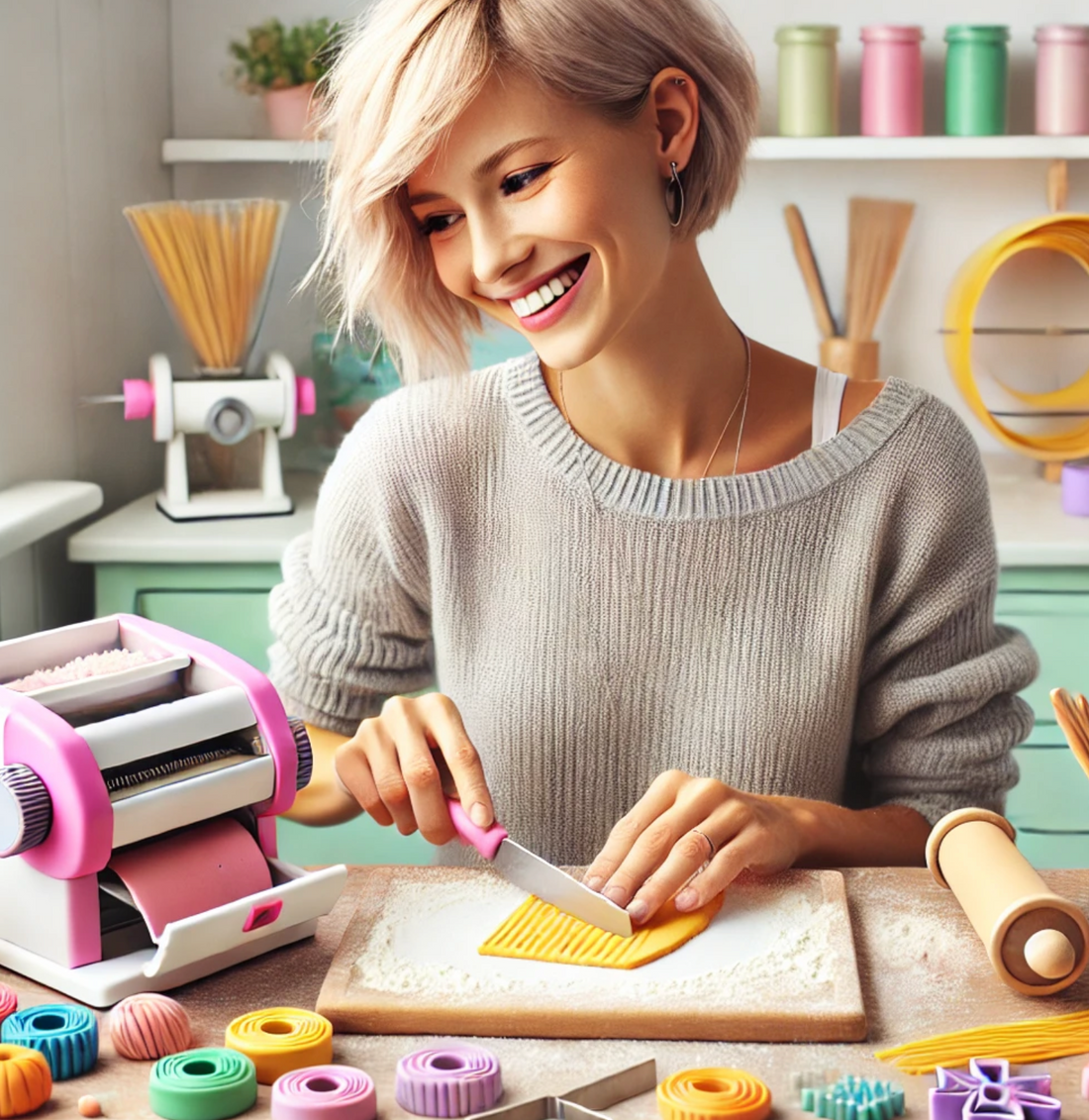The secret of molds that do not stick to the dough is here!

How to Prevent Polymer Clay Molds From Sticking to Your Clay? 🎨✨
Come on, let's find a solution to that annoying situation that we all experience from time to time: Clay sticking to the mold! 😩 Fortunately, there are a lot of practical solutions to prevent this situation. I will explain them all one by one now. If you are ready, let's get started! 😎
Quick Information About Deboss Patterns 📏
When using our debossing molds, you should pay attention to the thickness of your clay. Your clay should be between 2.5mm and 3mm. I usually use settings 2 or 3 on my Atlas machine, but each machine is different. If the clay is too thick, the imprint lines will be too deep and the design will not look as you want it to. It can also reduce durability after firing. If the clay is too thin, it will not show the imprint lines. In short: Balanced thickness means beautiful results! 😊
Ways to Prevent Clay from Sticking 👌
1. A Clean and Flat Surface is a Must 🧼
Make sure the surface you are cutting is clean and smooth. You can get the best results on surfaces like glass or flat ceramic tiles. If you cut your clay on wax paper or silicone mats, your clay will stick to the mold and you will not get the result you want. The clay needs to stick to the surface well, otherwise you will have trouble!
2. Cutting with Stretch Film 🎬
Some people like to use plastic wrap over the clay and then use the mold. This method prevents the clay from sticking to the mold and gives the pieces a slightly curved appearance. However, using plastic wrap doesn’t work very well with deboss molds because it prevents all the fine detail from meeting the clay. So, it’s good for straighter cuts but I don’t recommend it for debossing. 🤷♀️
3. Solution with Corn Starch! 🌽
When using debossing molds, lightly coat the blades of your mold with cornstarch. Put some cornstarch in a small bowl and dip your mold in it, then gently shake off or brush off any excess. I use a fan-shaped paintbrush for cornstarch; I use the handle of the mold to gently spread the starch. After cutting, you can brush off any excess starch with a soft brush. 😊
4. Half Cut Method 🛠️
If you are using a very detailed mold and cornstarch is not enough, try the “half cut” method. Starch your clay and mold, then press your mold halfway into your clay. Then remove the mold and starch the clay again. This will get the starch in every spot to prevent sticking. Then place the mold in the same spot and cut all the way through. This will work for even the smallest details! ✨
5. Water Usage 💧
Some people prefer to dip their molds in water or spray the clay with a little water before cutting. This method can also work, but be careful if you are using Fimo clay, it is not very good with water. Also, cornstarch works better for very detailed molds instead of water.
6. If Your Clay Is Too Sticky 🤔
If you have tried all the methods and the clay is still sticking, your clay may be too soft or sticky. In this case, you may need to “leach” your clay a little. Flatten your clay, place it between two pieces of regular printer paper and let it sit for about an hour. This will draw out the excess oils in the clay and make it more workable.
A Little Note 📝
Finally, I have found that Sculpey Souffle clay is not the best choice for some very detailed molds. It is less sticky in nature and may not give the desired results when making detailed cuts. But of course, each mold will produce different results, so don't be afraid to experiment!
That's it! Everything you need to know to prevent your molds from sticking to your clay is that simple. A little patience, a few tips and you're ready to create wonders with your Lulicutters molds! 🎉 Be sure to check out lulicutters.com for more information and mold options!
